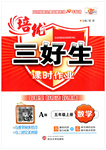题目内容
The human body is a living machine, and, like all machines, it needs "fuel" to supply it with energy. This is provided by the food we eat. But how much do we need to stay healthy?
The energy value of food is usually measured in calories. A calorie is the amount of heat required to raise the temperature of 1 kg of water by ![]() C .The number of calories people need per day is different, as the chat below shows. Also, the number of calories you use at any moment normally depends on the activity you are in. For example, you need more calories for standing than for sitting, more for running than for walking, and so on.
C .The number of calories people need per day is different, as the chat below shows. Also, the number of calories you use at any moment normally depends on the activity you are in. For example, you need more calories for standing than for sitting, more for running than for walking, and so on.
The energy in food is mainly in the form of three kinds of chemical materials-carbohydrate,protein and fat. Carbohydrate provides 3.8 Cal/gm(calories per gram)of energy, protein 4.0 Cal/gm,and fat 8.8 Cal/gm. Each food contains different amounts of these materials, as the second chart shows.
Chan I
CALORIES NEEDED PER DAY | |
BABY | 750 |
OFFICE WORKER | 2700 |
CHILD AGED 8 | 2100 |
WOMAN FEEDING BABY | 2700 |
MAN OVER 70 | 2100 |
BOY AGED 16 | 3000 |
WOMAN | 3600 |
FARMER | 2600 |
Chan II
| FAT | PROTEIN | CARBOHYDRATE |
MILK | 30% | 30% | 40% |
RICE | 5% | 10% | 85% |
PEANUTS | 60% | 30% | 10% |
64. calories arc required to raise the temperature of 5kg of water form ![]() C to
C to ![]() C?
C?
A. 55. B. 175. C. 325. D. 275.
65. If you lack for calories to support your running activities you'd better take more .
A. milk B. peanuts C. rice D. milk and rice
66. We may learn fm~ the charts that .
A. a child aged 8 requires more than 3 times the amount of calories that a baby does
B. a boy aged 16 requires nearly twice the amount of calories that a boy aged 8 does
C. a mother with a baby to feed uses up more calories them a hard-working farmer each day
D. an old man needs less calories than an 8-year-old boy on account of his less movement
67. Which statement agrees with the passage and the charts above?
A. You need more calories for swimming than for mountain climbing.
B. Food contains energy in the form of carbohydrates, proteins and fuel.
C. Different people need different amounts of energy depending on their age, sex, and the activities they are in.
D. 3 grams of milk provides 16.6 calories because carbohydrate provides 3.8 Cal/gm ,protein 4.0 Cal/gm, and fat 8.8 Cal/gm.

 培优三好生系列答案
培优三好生系列答案Section One
The city is an accumulation of human civilization. Just as the American social philosopher (哲学家) Lewis Mumford put it, it is a special system which, fine and compact, has been designed to preserve the fruits of human civilization. Many Western languages have developed their versions of the term “civilization” from the same Latin (拉丁语的) word “civitas”(meaning “city” ), and it is by no means a coincidence. The city has played a significant role in the perfection of order in human society.
Section Two
The emblem, showing the image of three people ― you, me, him/her holding hands together, symbolizes the big family of mankind. Inspired by the shape of the Chinese character “世” (meaning the world), the design conveys the organizers' wish to host an Expo which is of global scale and which displays the various urban cultures of the world.
Section Three
Created from the inspiration of Chinese character “人”, the design roots deeply in Chinese culture. It tells the world the eternal core (永恒的核心) and theme of Shanghai World Expo will be always human. The mascot “Haibao” will become the messenger for the theme of World Expo 2010 Shanghai China “Better City, Better Life”.
The basic structure of the Chinese character “人” in which each stroke supports each other also shows the concept that the beautiful life should depends on mutual-help. If the human are willing to support one another, the harmony among human, nature, and society will be available. Such an urban life will be nice.
Haibao’s confident smile is expressing his sincere greeting from China ― “World Expo 2010 Shanghai China welcomes you!”
1.Section One mainly tells us about ______.
A. the part cities play in human civilization B. the development of the word “city”
C. why the Expo is held in Shanghai D. where human civilization originated
2.The underlined word “it” in Section One refers to ______.
A. the civilization B. the philosopher C. the word D. the city
3.Which correctly matches the sections with the pictures described in the passage?
|
Pictures |
|
|
|
|
A. |
Section One |
Section Two |
Section Three |
|
B. |
Section Two |
Section Three |
Section One |
|
C. |
Section Three |
Section Two |
Section One |
|
D. |
Section Three |
Section One |
Section Two |
4.The second paragraph in Section Three explains how the creation is connected with the _____ of the Chinese word “人”.
A. story B. meaning C. shape D. Usage


